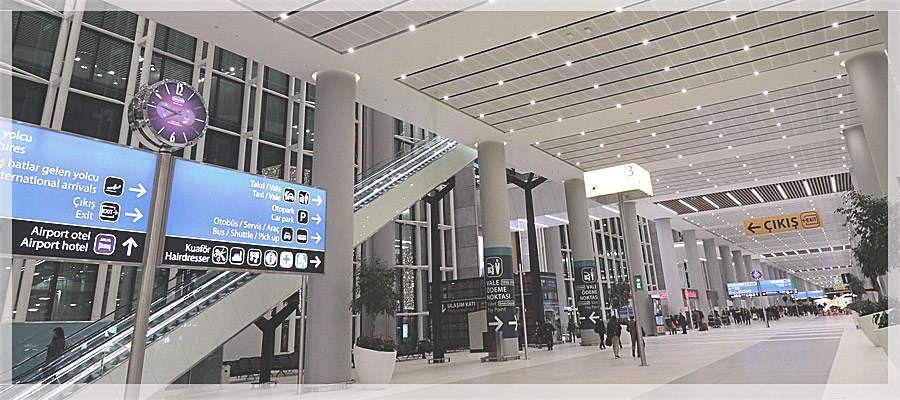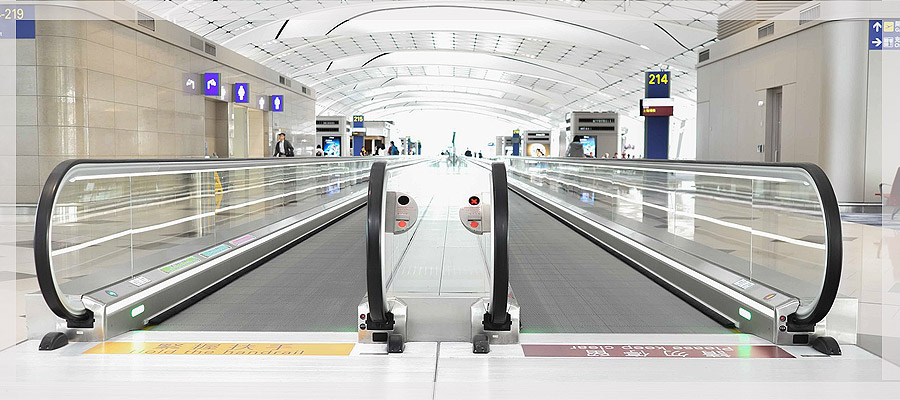What is the Flight Check-in Process?
Flight check-in is a process for confirming your place on a flight (and requesting acceptance by the airline). Flight check-in takes place within a time frame set and advised by the carrier. The check-in process is (usually) managed by the airline operating the flight (or by a handling agent working on behalf of the airline at the airport).
A primary function is to verify passenger identity and documents (passport). The check-in process includes aircraft seat allocation - the issue of boarding passes - plus the processing of hold baggage into the airport's baggage handling system. There are two forms of passenger flight check-in:
- Airport check-in (on the day of travel). Desks open between 3 & 4 hours before departure.
- Online check-in (in advance). Online check-in opening times vary from airline to airline and can be between 48 hours and 30 days before departure.
What happens at airport check-in?
Airport check-in is available at most UK airports and is supported by most airlines (but not all). Make your way to your airline's check-in desk; you'll need a valid passport, a visa (if required), plus your e-ticket or reservation printout (booking confirmation, email receipt).
Before leaving home, check your baggage is within the permitted size and weight (hold baggage is checked in and processed through to the aircraft's cargo hold). You will be asked questions about your baggage/luggage; these are security checks regarding your baggage contents, and you should answer the questions carefully. Your luggage will be weighed and tagged, then entered into the airport's baggage handling system.
Once your documents have been verified, you will be assigned aircraft seat numbers (unless already reserved). Finally, you'll be issued a boarding pass and baggage tag receipts; you then 'make your way' through airport security and into the departure lounge area.
How to use airport self-service Check-in?
Check-in kiosks: Some airports and airlines offer self-service check-in kiosks. These self-service machines provide an alternative and hassle-free way of 'checking in' for your flight at the airport.
Self-service check-in is quick and easy to use - it allows you to print your boarding card by following user-friendly instructions on a touchscreen display. Start by identifying yourself by entering your PNR (Passenger Name Record) or booking reference, flight numbers, and credit card information, or by scanning your passport. After self-service check-in and if travelling with hand baggage only - you can proceed straight to the security check area. If you have baggage to check in, go to the self-service bag drop desks to enter your bags into the airport's baggage handling system.
- Always be aware of the latest airport check-in time for your flight. This is usually printed on your itinerary, booking confirmation printout or e-ticket. Once you know your check-in time, you'll need to factor in how much time you need to get through security and reach the departure gate, allowing plenty of time to board your flight.
- Remember, bag drop services usually close around 60 minutes before long-haul flight departures and 45 minutes before most short-haul flights.
- If travelling in a group, consider giving yourself more time to check in.
- Remember, the check-in time is the latest time for getting to the check-in desk, not for joining the back of the queue. If you miss the airport check-in deadline, your place on the flight may be cancelled or go to someone on the waiting list, and you will have very little or no claim against the airline.
What is Online flight check-in process?
Online check-in is the process in which passengers confirm their identity and presence on a flight via the Internet - with the ability to select seats and print or download boarding passes to a smartphone or airline app.
Top Tip: Remember, when downloading your boarding pass to your phone, always print a copy - just in case. Please note! Some airlines require boarding passes to be 'printed' in a specific format (e.g. A4 single-sided).
Opening time: Airlines open their online check-in 48 hours or more before departure, with certain airlines opening online check-in several days prior. Always check your 'check-in' options - some airlines only accept airport check-in, and some are just 'online only'.
Advantages of online check-in: The main advantages of online check-in include: (1) Not having to stand in line at the airport to check-in. (2) The time taken travelling through the airport system may reduce depending on whether you have hold baggage to 'drop off'. If you are travelling with 'hand luggage only' and you've checked in online and printed off your boarding pass, you can go straight to security for screening.
Bag Drop: If you have checked in online and travelling with hold baggage - most airlines now offer convenient self-service bag drops. These are usually located next to the airport's check-in desks. Alternatively, use a staffed bag drop desk if available.
Top Tips: (1) Remember, the check-in time is the time for getting to the check-in desk, not for joining the back of a long queue. (2) Work out what time you need to arrive at the airport - then add 1 extra hour for possible delays.
Documents required for UK airport check-in for British Passport holders:
You'll need a valid passport, a visa (if required), plus your e-ticket or reservation printout (booking confirmation, email receipt) - Your documents must be up-to-date and valid - see the GOV.UK website links below.
Check you have the correct documentation to enter the country you are travelling to. For travel to most European countries, a British Passport must be valid for at least three months on the date you exit the EU, and passports 'must have been issued' in the past 10 years at the time of entry. (Some countries require British passports to be less than 10 years old throughout the entire stay in the EU, so check to make sure).
Some countries have a 6-month passport validity rule (meaning your passport must be valid for more than six months on exit), so check your passport is valid long enough before it expires. In general - countries that require an entry visa will often require a passport to be valid for at least six months after the date you are due to leave their country.
Top Tips:
(1). Always ask your airline or travel agent (at the time of booking) for details on passport and visa entry requirements for the countries you intend to visit.
(2). For up-to-date information on passport & visa entry requirements for British Passport holders - visit the GOV.UK website. Or check with the Foreign Travel department https://www.gov.uk/foreign-travel-advice.
- Check your 'check-in' options - some airlines accept airport check-in only, some are online only, and plenty of airlines offer both. Check-in times and procedures may vary from airline to airline and airport to airport.
- What time should you check-in? Confirm your flight check-in options and times directly with your travel agent or airline (airport check-in times can vary between 2 and 4 hours before departure); also, allow sufficient time to pass security checks. Remember, give yourself plenty of time to get to the airport - arriving early ahead of time may prove less stressful when navigating a busy airport system.
- Be aware certain airlines now charge to check in at the airport. Some airlines will also charge a 're-print fee' for lost or left-at-home boarding cards, so keep your print-outs safe.


